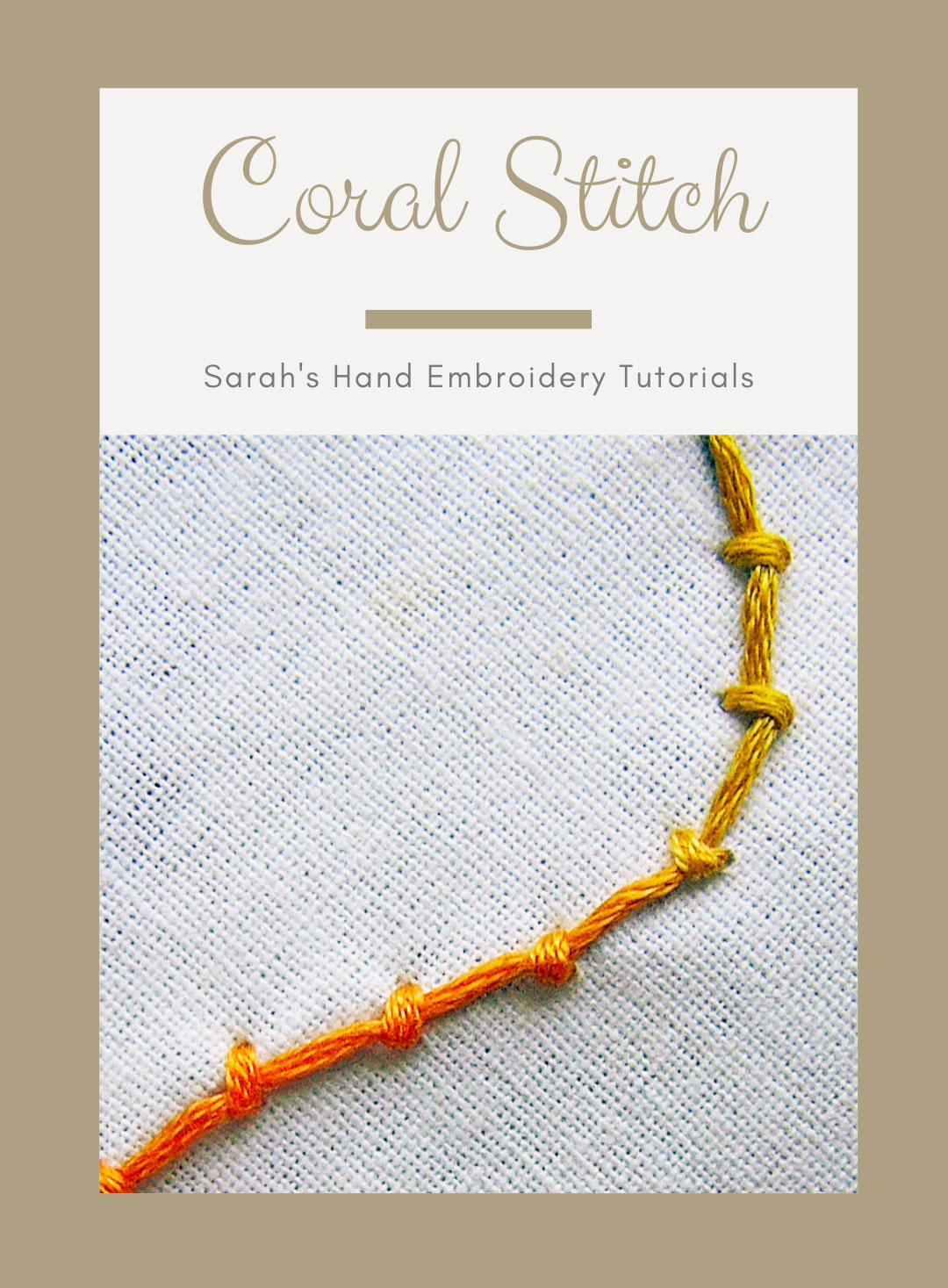Coral Stich
If you're interested in embroidery, you've probably heard of the coral stitch. This stitch is versatile, beautiful, and allows you to create stunning designs. But do you know everything there is to know about it? In this article, we'll dive into the details of the coral stitch and explore its many applications. From beginners to advanced embroiderers, this post is for anyone looking to expand their embroidery skills.
Pain Points of Coral Stitch
One of the most common pain points related to the coral stitch is difficulty maintaining consistency in the stitch length. Without consistency, it can be difficult to achieve a uniform, polished look throughout the design. Another pain point could be finding the right type of thread to use. Not all thread types are created equal, and choosing the wrong thread could result in a design that doesn't hold up over time.
The Target of Coral Stitch
Coral stitch is often used to create the appearance of a textured line or vine. It's perfect for organic shapes and can be used to create both simple and complex designs. Some popular applications for the coral stitch include flowers, leaves, and vines.
Summary of Coral Stitch
In summary, the coral stitch is a versatile and popular embroidery stitch. It is ideal for creating organic lines or shapes and is used frequently in floral, botanical, and nature-inspired designs. Some pain points to keep in mind include thread choice and consistency in stitch length. Now, let's dive deeper into what makes the coral stitch so special.
The Target of Coral Stitch and Its Applications
The coral stitch is typically used to create the appearance of textured lines or vines. This versatile stitch can be used in a variety of designs to create organic shapes and patterns. One of the most popular applications for coral stitch is in floral designs. It is commonly used to create leaves, vines, and stems in a wide range of flowers. Another popular application for coral stitch is in nature-inspired designs. It can be used to create the appearance of textured branches and vines, adding a beautifully intricate touch to any embroidery piece.

How to Master Coral Stitch
When I first began practicing embroidery, the coral stitch proved to be a difficult stitch to master, but with some practice, I was able to hone in on my skills. One of the most important things to remember when mastering the coral stitch is to pay close attention to your stitch length. Consistency is key in creating uniform, polished designs. It's also essential to choose the right type of thread for your design. I've found that using embroidery floss with multiple threads for a thicker, more textured appearance yields great results. Lastly, practice, practice, practice! The more you practice the coral stitch, the easier it becomes to maintain consistency and create beautiful designs.

The Different Variations of Coral Stitch
There are several variations of the coral stitch, including the double coral stitch, the detached coral stitch, and the knotted coral stitch. The double coral stitch is created by layering two individual coral stitches on top of each other to create a thicker, more textured appearance. The detached coral stitch is created by separating individual stitches from one another to create a more airy and open texture. The knotted coral stitch is created by adding a small knot at the end of each stitch, creating a unique and intricate design.

Question and Answer
Q: What type of fabric is best for coral stitch?
A: While the coral stitch can be used on a variety of fabrics, I've found that it works best on fabrics with a tight weave, such as cotton or linen.
Q: Can the coral stitch be used for lettering or other text designs?
A: While the coral stitch is primarily used to create organic shapes and lines, it can be adapted for use in lettering or text designs. Experiment with different variations of the stitch to create unique, customized text designs.
Q: How can I make my coral stitch stand out more?
A: To make your coral stitch stand out more, try experimenting with different thread types and colors. You can also add additional textures and depth to your design by layering different variations of the coral stitch on top of one another to create a more intricate appearance.
Q: What is the best way to practice the coral stitch?
A: The best way to practice the coral stitch is to start with a small pattern or design and work on perfecting the stitch length and consistency. Practice on different types of fabric and experiment with different variations of the stitch to find what works best for you.
Conclusion
The coral stitch is a beautiful and versatile embroidery stitch that can be used in a variety of designs. While perfecting the stitch may take some practice, the results are well worth it. Whether you're a beginner or an experienced embroiderer, adding the coral stitch to your skill set is a must!
Gallery
Queenie's Needlework: TAST #66 Coral Stitch

Photo Credit by: bing.com / needlework queenie
Coral Stitch - YouTube

Photo Credit by: bing.com /
Coral Stitch - YouTube

Photo Credit by: bing.com / coral stitch
Coral Stitch – Sarah's Hand Embroidery Tutorials
Photo Credit by: bing.com / stitch coral embroidery knots trail done between fall left right known also rocksea
Stitches For Coral | Needlepoint Stitches, Needlepoint Stitch, Needlepoint

Photo Credit by: bing.com / needlepoint
